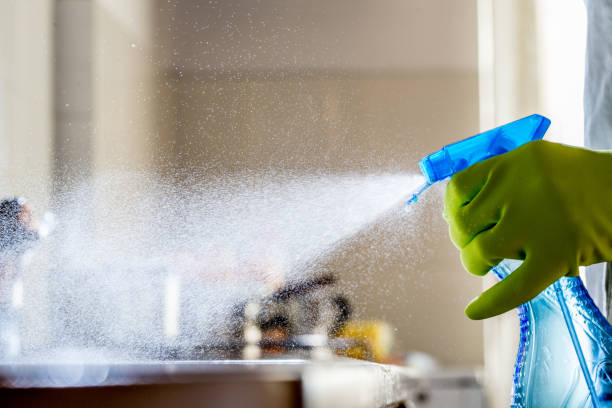
How To Clean a Bidet Or Bidet Attachment: Step by Step
Share
If you're curious about maintaining hygiene in your bathroom, understanding how to clean modern bidet attachments is essential. These innovative devices not only enhance comfort but also require proper care to function effectively. Regular cleaning ensures that your bidet attachment remains sanitary and performs at its best, providing you with the ultimate in bathroom convenience and hygiene.
Modern bidet attachments often come with self-cleaning features and benefit from gentle care. Ditch the harsh chemicals and abrasive scrubbers—here’s how to clean a bidet safely and effectively.
Materials Needed:
- Dish detergent or vinegar
- Water for diluting and rinsing
- Two soft cleaning cloths (one for wiping, one for drying)
- A small brush or toothbrush
Pro Tip: Avoid harsh, chlorine-based chemicals like bleach, as they can weaken rubber O-rings and gaskets, leading to internal leaks.
How to Clean a Bidet Seat or Attachment
The key difference between cleaning a bidet seat and an attachment is electricity. Most bidet seats are electric, so if you’re doing more than a surface wipe, unplug your bidet to avoid the risk of shock. Whether your bidet is electric or non-electric, avoid fully submerging the attachment in cleaning solution to prevent damage to internal components.
Every bidet is different—some classic designs resist crud buildup, while others have additional filters and valves requiring a bit of creativity with a toothbrush. Always shut off the water when detaching your bidet to prevent leaks or accidental sprays.
We’ve got your butt covered with daily, monthly, and annual bidet cleaning tips.
Everyday Care
Daily Bidet Care: Daily bidet care involves ensuring consistent water flow and nozzle cleaning. Regular use and quick wipe-downs will keep your bidet sparkling.
- Daily: Use the wash function to clean the nozzle every day. This feature runs water over the nozzle to clean any backsplash or invisible debris.
- Weekly: At least once a week, run a damp cloth over your bidet to remove dust and grime. Use water, vinegar, or a diluted dish detergent with a neutral pH like Dawn.
- Caution: Avoid soaking your bidet with a spray cleanser, especially the control panel or remote. Lightly dampen a cloth and do a quick wipe-down to avoid damaging the components.
Monthly Care
Monthly Bidet Care: Monthly care involves cleaning grime and buildup where the sun doesn’t shine. If your bidet isn’t used heavily or you have only 1-2 users in your household, you could clean under the seat once a year.
- Remove the bidet and toilet seat: If you have an electric bidet seat, unplug it first. Turn off the water in case anything gets jostled while detaching.
- Wipe everything down: Dampen a soft cloth and clean hard-to-reach places with mild detergent. Let the bidet air dry or wipe it with a dry, non-abrasive cloth before reinstalling.
- Rinse the deodorizing filter: If your bidet has a scent-neutralizing filter, remove and clean it with a toothbrush and water, then let it dry.
- Clean the water nozzle: Once the bidet is reattached, inspect and clean the nozzle manually. Use a toothbrush or damp cloth with a bit of vinegar or water, being very gentle to avoid damaging the nozzle.
Semiannual Care
Long-Term Bidet Care: Long-term care focuses on addressing water quality issues. Once or twice a year, check for mineral buildup, especially if you notice a drop in pressure.
- Unclog the nozzle tip: Soak a removable nozzle tip in vinegar for 2-4 hours. If the tip cannot be removed, extend and submerge the nozzle in a vinegar-filled bag using a rubber band.
- Check the inlet filter: Some bidets have a strainer near the inlet to protect interior components from hard water deposits. Turn off the water supply and check these filters for sediment or rust.
- Clear interior connection hoses: If your bidet has a connection hose with a water shutoff valve, turn off the water supply and check for any deposits or buildup. Use a toothbrush to clear any sediment.
How to Clean an Electric Bidet
The guidelines above apply to cleaning an electric bidet, with a few extra tips:
- Always unplug before cleaning: This eliminates the risk of electrical shock.
- Avoid chlorine-based cleaners: These can damage components that maintain your bidet's water-tight seal.
- Use damp cloths, not sprays: Protect the technical components from moisture damage.
- Know your nozzle: Understand whether your nozzle tip is removable or fixed, and whether it’s self-cleaning or needs manual cleaning.
Keep Your Bidet Shower-Fresh
Maintaining a bidet is easy with self-cleaning features and occasional checkups. Remember:
- Use only diluted detergents with a neutral pH or vinegar.
- Never use bleach or abrasive scrubbing pads.
- Bidets should not be soaked—use a soft, damp cloth instead.
- Daily activation of the wash mode on your nozzle covers most cleaning needs.
- Follow the manufacturer’s guidelines for maintenance.
Now that you know how to clean a bidet, you’re ready to upgrade your throne with the perfect butt washer!
Frequently Asked Questions
Are Bidets Sanitary? Yes, cleaning with a bidet is twice as sanitary as wiping with dry toilet paper. A bidet uses a targeted spray of water to clean, reducing the risk of infections like UTIs.
Can You Use a Toilet Cleaner with a Bidet? No, chlorine-based cleaners like bleach can damage bidet components and cause leaks. Use diluted detergents with a neutral pH or vinegar instead.
How Do You Unclog a Bidet? Soak a removable nozzle tip in vinegar for 2-4 hours, or secure a vinegar-filled bag around the nozzle tip to dislodge mineral deposits and restore pressure.